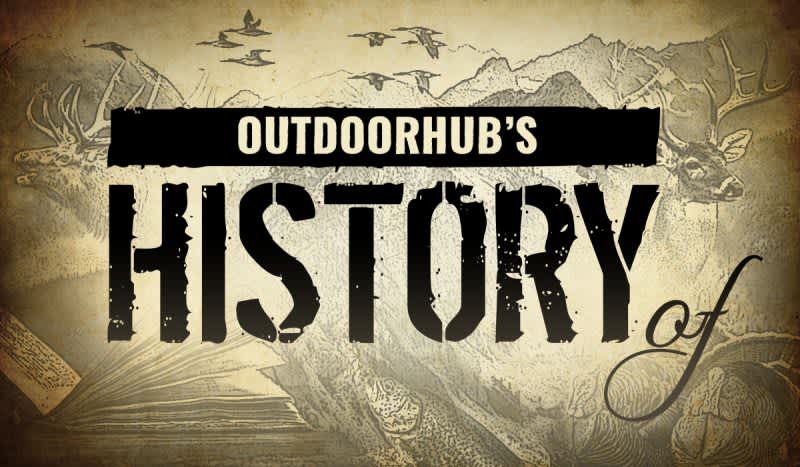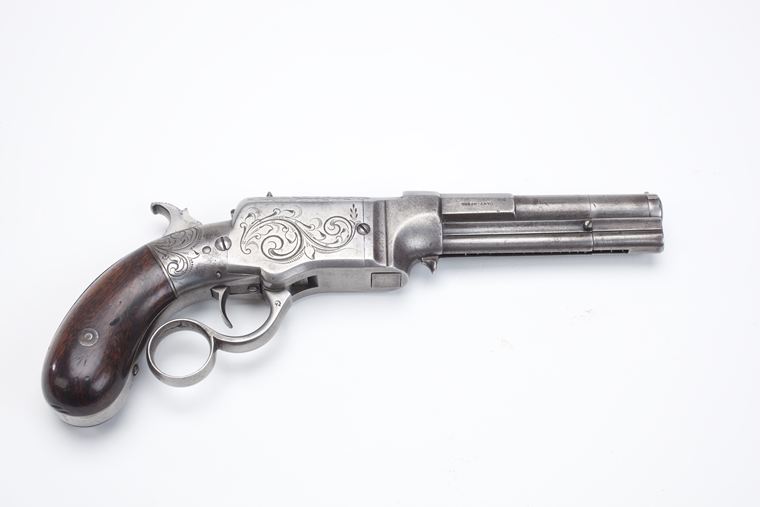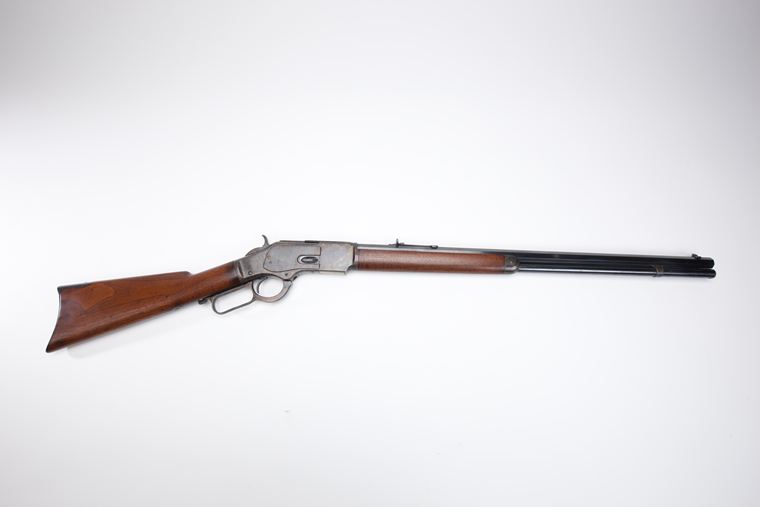History Of: Lever Action Rifles
Jeff Williamson 08.15.18

It is the gun of the Wild West – especially in Hollywood – in the hands of John Wayne, Jimmy Stewart, Chuck Connors; in movies such as SILVERADO, TRUE GRIT and of course, WINCHESTER 73. The Lever Action Rifles ability to spit lead spawned the imaginations of countless childhoods like Ralphie in A CHRISTMAS STORY.
Yet it never really achieved full acceptance as a military arm. The lever action was a firearms evolutionary diversion: a 19th century equivalent of an assault rifle created in an age when armies still “assaulted” in ranks of men armed with single shots and bayonets because anything more, to the minds of the established brass, wasted ammunition. Yes, individual soldiers did grab the lever action of their day for use in personal defense and in attack; and true, there was the odd model adopted at times. By and large, however, the lever action remained the firearm of the common man, a civilian weapon that, for a little while anyway, could outshoot anything in a government’s official arsenal. No wonder it still holds a warm spot in many hearts.

Lever actions were born of 1800’s experimentation. Multi barreled guns and other guns with awkward mechanisms, their design was limited only by the imagination. The earliest production model of what can be called a lever gun was Colt’s ring lever carbine, but it was overly complicated and revolver carbines, for their short life, could just as easily be cocked like revolvers without an extra mechanism.
Perhaps the most obvious progenitor was by Volcanic Arms, founded in 1855 with combined input of Benjamin Henry, Horace Smith, Daniel Wesson and of course Oliver Winchester. It combined a tube magazine with what became the familiar lever to be operated by the shooter’s whole hand. Volcanic also was the birth of the rimfire cartridge. This provided the stepping stone to the next development which was encouraged by, and proven in, the political climate of the time.

This US Civil War provided R&D for a great many new weapon designs, most of which mercifully expired in their childhood before being inflicted upon the soldiers of either side. Yet, two lever actions that proved promising were the 1860 Henry Rifle and the 1860 Spencer Carbine. The latter was officially issued to Federal cavalry units: it fired a .56-56 caliber contained cartridge from a seven round tube magazine in the stock. Though it still had to be cocked for each round, it dramatically increased the firepower of the US cavalry man. It was portable, reloaded quickly off preloaded sleeves and fired a large caliber bullet. Reliability of the ammunition was sometimes questionable, however, and it had a reduced effective range. Yet there are few reports of any soldiers who, after having been issued one, wanting to go back to a single shot, muzzle loading carbine.

The Henry is a bit more famous as it is the granddaddy of what most think of when they consider a lever action firearm. It was the 1860 Henry, however, that established the reputation of “loading up on Sunday and shooting all week.” Developed by Benjamin Henry, the 1860 had the inline hammer and lever that when operated ejected the old case, cocked the hammer and then loaded the new round in the chamber. Chambered in .44 rimfire, it could not compete with the range or accuracy of the muzzle loading rifles of the day, but for spitting lead at close range, soldiers loved it…. Well Confederates did not love it: they called it that damnable Yankee rifle you could load on Sunday and shoot all week. Yet they were expensive, the ammunition was not yet common and the rifles not as sturdy as the battle rifles of the day.
The term lever action can also apply to falling block actions like the Martini Henry and the Sharps. In the decade after the Civil War, several nations did adopt lever actions such as the Martini (Great Britain) and Winchester did win a government contract or two, such as from Turkey for their 1866 “Yellowboy.” The 1866 was named for its brass alloy frame, it had a simplified and stronger version of the 1860 with the addition of a side loading gate facilitating simpler loading on the run. Still chambered in .44 rimfire, the 1860 and 1866 both established the standard lever action as a popular choice for sportsmen and cowboys alike. Many of these firearms also found their way into the hands of Plains Indians.
The most famous Winchester, however, was the 1873. This was first chambered in the popular .44-40 caliber, a popular caliber in Colt revolvers of the same model year and close competitor of the .45 Long Colt. Providing a rifle or carbine that fed off of the same caliber as one’s side arm simplified matter immensely for those who made a living, or protected their living, with firearms. The Models 1873 and 1876, which was offered in larger sporting calibers of the day, still were unable to handle the higher pressure loads of most militaries – the US Army particularly. Nevertheless, the 1873 and 1866 rifles did see action in the Indian Wars of the late 19th century. Unfortunately for the likes of General Armstrong Custer, they were in the hands of the Sioux.

The higher pressure issue was solved by none other than John M. Browning in 1883 with a new locking mechanism that was introduced on Winchester’s Model 1886. It not only could fire the .45/70 cartridge of the US Army but even larger rounds used by buffalo hunters. However, economics (lever guns were more expensive than the trapdoors in service) and military doctrine (against any notion other than aimed or volley fire for which single shots were perfectly capable) prevented the lever action from entering widespread use.
For sportsmen, however, they were a favorite. Winchester introduced the .30-30 cartridge in 1895 specifically for its Model 1894 that was capable of firing the small bore, smokeless powder round. The Winchester 1895 introduced the lever action to the box magazine, allowing the new pointed, spitzer, style bullets to be fired without fear of setting off primers of the next round, a concern with tube magazines where bullet tips rested against primers.
The 1895 saw military use, both informally in the hands of officers like Theodore Roosevelt in Cuba during the Spanish American War chambered in the .30 Army (.30-40 Krag) and in a contract to Tsarist Russia during World War I in a strange hybrid of that rifle and the Mosin Nagant, M1895. Theodore’s favorite Winchester, however, appears the 1895 chambered in the .405 Winchester round that he took on safari.
Other makers certainly jumped onto the lever action band wagon. The most obvious being Marlin in 1889 in .22 followed quickly by its own 1894 carbine and Model 336 in several popular deer calibers. Also in the 1880’s was the Whitney-Kennedy lever rifle (Eli Whitney Jr., son of the cotton gin inventor), which was capable of firing the same calibers as Winchester’s 1876, but never reached the same popularity. Some that did include the Savage Model 95 and 99, it used a rotary magazine for safe use of pointed ammunition and a hammerless design which reduced hang time. It was very popular, available in numerous calibers and remained in production to 1998.

Browning’s Lever Action Rifle (BLR) feeds off of a detachable box magazine to allow the use of pointed modern ammunition while the BLR had a geared action making it safe to use with magnum pressures. That rifle is still in limited production. So too are Henry Arms that are well made and liked and included new production 1860 namesake model and for a time the “mare’s leg” pistol.
For the classics: Marlin still produces the M1894 and 336 rifles, albeit in limited runs. Winchester (through Browning) offers limited runs of the 1895 as well as the 1894, and these are usually offered at premium prices. Used Model 94 rifles, however, are so plentiful in some places of the US (either by Winchester or made under license by J.C. Higgins and/or Sears) to the point of being referred to in the Northeast as the “Pennsyltucky AK.” Though a premium is often demanded for models made before 1964 when Winchester stopped milling many of its own components.
As to wild west examples: so many were made that there are still a few poking around today, and those of course command a high price. For new productions there are the Rossi from Brazil or the Italian gun makers like Pietta and Uberti. These latter modern, firing replicas have a beauty of their own, and can fetch hefty price tags, but they are not the originals. They also won’t devalue with use of modern ammo and therefor offer many of us our only chance to re-enact the Duke in RIO BRAVO and EL DORADO. Because of this, while modern weapons may have more power and capacity, the classics tenaciously refuse to go out of style.

